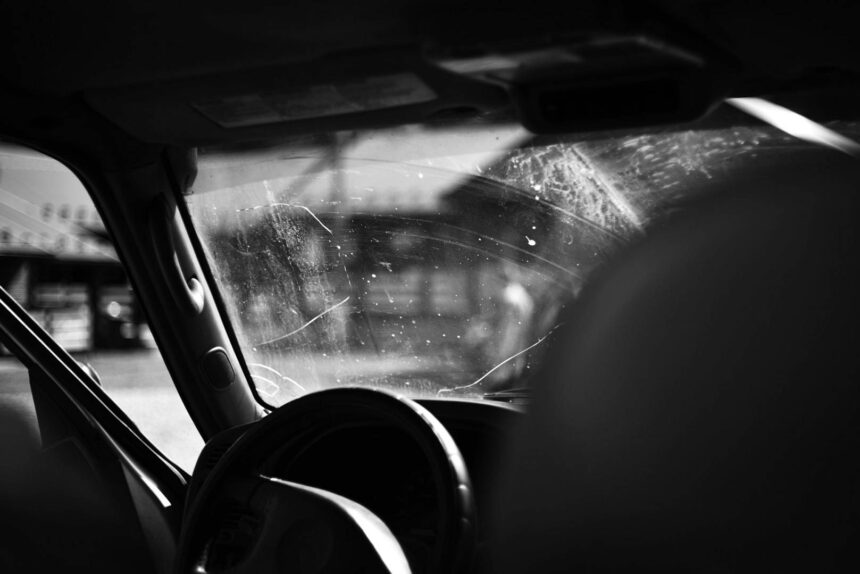A cracked windshield may look harmless at first glance — a thin line spreading across the glass like a frozen vein, or a tiny chip no bigger than a grain of rice.
Many drivers shrug it off, thinking, “It still holds, I can see just fine, I’ll deal with it later.” But what starts as a small cosmetic imperfection can quickly turn into a serious safety hazard. Windshields are not just transparent barriers against wind and dust; they are a fundamental structural component of your vehicle. Ignoring damage not only endangers your visibility — it compromises the entire safety system of the car. Driving with a cracked windshield is like sailing a boat with a weakened hull; it might stay afloat for a while, but one strong wave could change everything.
One of the most immediate risks of a cracked windshield is impaired visibility. Cracks reflect light unpredictably, especially during sunrise, sunset, or when facing incoming headlights. A tiny glint at the wrong moment can blind you for half a second — and at highway speed, half a second is all it takes to travel several meters blind. Water droplets, dust, and frost also settle differently around cracks, creating blurry spots or streaks that further distort your view. You may think you’ve learned to “look around it,” but in critical situations your brain processes the road through milliseconds of instinct. A split-second miscalculation caused by a crack could be the difference between braking in time and crashing.
Beyond visibility, structural integrity is the deeper, more underestimated danger. Windshields contribute up to 30% of a vehicle’s structural strength. In a head-on collision, the windshield prevents the roof from caving in and helps absorb impact energy. A cracked windshield, however small the damage seems, is already weakened. Think of tempered glass — once compromised, its internal tension changes. One additional shock, a sudden pothole, extreme temperature shift, or even slamming a door too hard can cause the crack to spread rapidly. If the windshield gives way during a crash, the roof can collapse more easily, increasing the risk of fatal injuries.
Windshields also play a critical role in airbag deployment. When the front airbags activate, they inflate against the windshield for structural support. If the glass is cracked, the airbag may push through it rather than bouncing back toward the passenger. This can cause airbags to deploy incorrectly, too late, or with reduced cushioning force. A safety feature designed to save your life could fail simply because the windshield could not withstand the impact. Many drivers do not realize that airbags and windshields operate as a team — weaken one, and the other cannot perform its function.
Modern cars rely even more heavily on flawless windshields due to built-in sensors. Lane-assist, collision detection, automatic braking, rain sensors, and cameras must read the road clearly to function. A crack that crosses the sensor’s field of view could distort the reading, sending incorrect or incomplete information to driver-assist systems. When a vehicle is designed to react in milliseconds, a misread image could trigger an unnecessary brake, prevent a needed one, or fail to warn you in time. Technology cannot protect you if its view is fractured.
There’s also the issue of temperature and weather. Heat expands glass, cold contracts it — and cracks respond like fault lines. You may park your car in the sun and return to find the crack twice as long. Winter brings its own threat; warm defroster air meeting frozen glass accelerates the crack like lightning. A windshield that looked stable yesterday might not survive tomorrow’s temperature shift.
The legal side should not be ignored either. Many regions consider a cracked windshield a safety violation because it puts not just you but everyone around you at risk. Just as Maritime law requires ships to maintain seaworthy hulls to protect crew and cargo, road regulations demand vehicles remain structurally safe. A cracked windshield can result in fines, failed inspections, or liability complications after an accident. If authorities deem your vehicle unsafe, responsibility may fall fully on you, even if you were not the primary cause of the crash.
Ultimately, driving with a cracked windshield is a gamble with high stakes. The risk is silent, growing, easy to overlook — until the moment it isn’t. A windshield replacement is far cheaper than medical bills, insurance disputes, or the irreversible consequences of a preventable accident. The safest time to fix a crack is the moment you notice it. The longer you wait, the more you rely on luck rather than protection.
The road is unpredictable — debris, weather, sudden stops, and heavy traffic test your vehicle every day. Your windshield is your first shield against that uncertainty. If it’s cracked, the shield is already broken. Not visible to the casual eye, but structurally weakened, waiting for pressure to strike. And when it does, the failure is absolute.
Taking action early is not just responsible — it is lifesaving. Repair when the damage is small. Replace when cracks spread, obstruct vision, or weaken the frame. A clear, intact windshield does more than let you see the road. It makes sure you survive it.
